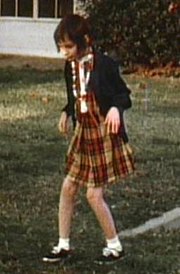During Dr.Wedes lecture our class discussed two different types of conditioning described as classical conditioning and operant conditioning. Classical conditioning is when an organism learns to associate stimuli. A very popular example of this conditioning is Pavlov’s dogs. Operant conditioning happens when an organism forms an association between behaviors and resulting events. An example of operant conditioning is teaching a seal to balance a ball on its nose by feeding it fish after it does the action. The main difference is that classical conditioning associates an involuntary response and operant conditioning associates a voluntary behavior.

I experienced operant conditioning when I was around the age of two. My parents told me that they created a system of operant conditioning to help me potty train. My mom said she kept a jar of M&M’s in the bathroom and each time I came to the bathroom myself she would give me one. She said this worked for a while until I got bored of the M&M’s and I would walk to the bathroom just to eat the M&M’s and fell back into my routine of diapers. She then came up with a better idea and said that each time I went to the bathroom she would tally it on a chart and once it reached a certain number then we would go to Disney World. She had already been planning the trip but acted like I had to work for it and my two year old self was so excited and became determined to reach the goal. My mom was using a positive reinforcement to increase my behaviors by presenting a positive reaction and reward each time I went to the bathroom. She said I would practically run to the bathroom each time I had to go so I could reach the goal. She said that even after I reached the goal of Disney I still kept going to the bathroom because I associated a very positive feeling and reward with it.
Although this was just a small example, operant conditioning can be used in various amounts of ways. This type of conditioning is great for training pets and humans. Both types of conditioning are used in tv shows and everyday life.


